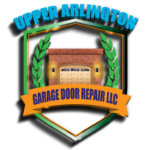- Commercial Garage Door
- Garage Door Opener Installation
- Garage Door Spring Repair
- Same Day Garage Door Repair
- Custom Garage Doors
- Garage Door Opener Repair
- Garage Door Track Repair
- Garage Door Cable Repair
- Garage Door Panel Repair
- Local Garage Door Repair
- Garage Door Replacement
- Noisy Garage Door Fix
- Garage Door Installation
- Garage Door Section Replacement
- Overhead Garage Door Repair

7 Reasons Your Garage Door Opener Isn’t Working (And How to Fix It)
A malfunctioning garage door opener can quickly disrupt your daily routine, leaving you frustrated and inconvenienced. At Upper Arlington Garage Door Repair, we understand how vital a functional garage door is to your home’s security and ease of access. Identifying the root cause of common opener problems can help you address them effectively and maintain your system’s longevity.
When it comes to garage door opener repair, understanding the symptoms and fixes can save you both time and money. Below, we’ll explore the top reasons your opener might stop working and offer solutions to get it back in top shape.
Identifying the Main Causes of Opener Issues
Garage door openers are complex mechanisms with many interconnected parts. When one of these components malfunctions, it can cause the entire system to fail. Here are seven of the most common reasons your opener might not be working, along with actionable tips to resolve each problem.
1. Dead Remote Batteries
One of the simplest and most frequent culprits is a dead battery in your garage door remote. If pressing the remote button doesn’t trigger the opener, try replacing the remote’s batteries. This quick solution often resolves the issue without professional intervention.
To prevent future disruptions, keep a spare set of batteries in your home and replace them at the first sign of weak performance.
2. Misaligned Photo Eyes
Photo eyes are small sensors located on either side of your garage door, just above the ground. These sensors emit an invisible beam to detect objects in the door’s path, ensuring safety. If the photo eyes are misaligned or obstructed by dirt, the door may fail to operate.
How to fix it: Clean the sensor lenses with a soft cloth and carefully adjust their alignment. Ensure the beams are pointed directly at each other for proper functionality.
3. Problematic Garage Door Tracks
Your garage door opener relies on well-maintained tracks to guide the door’s movement. Over time, dirt, debris, or physical damage can distort these tracks, making it difficult for the opener to lift or lower the door.
How to fix it: Inspect the tracks for any obstructions, dents, or misalignments. Use a level to confirm they’re parallel to the ground and secure them with screws if needed. For severe damage, consult the professionals at Upper Arlington Garage Door Repair.
4. Worn-Out Springs
The springs in your garage door work alongside the opener to balance its weight. If the springs are broken or worn out, the opener may struggle to lift or lower the door. This is not only frustrating but potentially dangerous if ignored.
How to fix it: Call a professional repair service to inspect and replace the springs. Attempting to fix them yourself could lead to severe injury or further damage.
5. Disconnected or Damaged Motor
The motor is the powerhouse of your garage door opener. If it becomes disconnected from the power source or sustains damage, the opener will cease to function. This can occur due to electrical surges, physical impacts, or simple wear over time.
How to fix it: Check for a tripped circuit breaker or unplugged cord. If the motor still doesn’t work, contact a professional to assess whether it needs a repair or replacement.
6. Faulty Limit Settings
Garage door openers feature limit settings to control how far the door opens or closes. If these settings are too low or high, the door may fail to close completely or reverse unexpectedly.
How to fix it: Refer to your opener’s manual to adjust the limit settings. Typically, this can be done by turning screws or knobs on the motor housing.
7. Worn-Out Hardware
Over time, the screws, hinges, and bolts of your garage door can loosen or wear out, impacting the opener’s ability to function smoothly. Regular wear-and-tear is common but should not be ignored.
How to fix it: Tighten any loose components carefully. Inspect for signs of rust or damage and replace faulty parts as needed.
Preventative Tips to Avoid Future Opener Problems
Schedule Regular Maintenance
Routine maintenance is the key to extending your garage door opener’s lifespan. Have professionals inspect and service your system annually to catch minor issues before they escalate into major repairs.
Use Your Opener Properly
Avoid placing unnecessary strain on your opener by using it responsibly. For example, don’t open and close the door repeatedly in quick succession or overload the door with excess weight.
Final Thoughts
Garage door opener issues can range from minor inconveniences to major headaches, but understanding the common causes gives you the power to address them effectively. By staying proactive with maintenance, fixing small problems yourself, and seeking professional help when needed, you can keep your opener running smoothly for years to come.
If you’re facing stubborn issues or require expert advice, the team at Upper Arlington Garage Door Repair is here to help. From troubleshooting to professional garage door opener repair, we’re dedicated to keeping your system operating at its best. Don’t wait for a small problem to become a big one—take action today for a safe and hassle-free garage experience.
